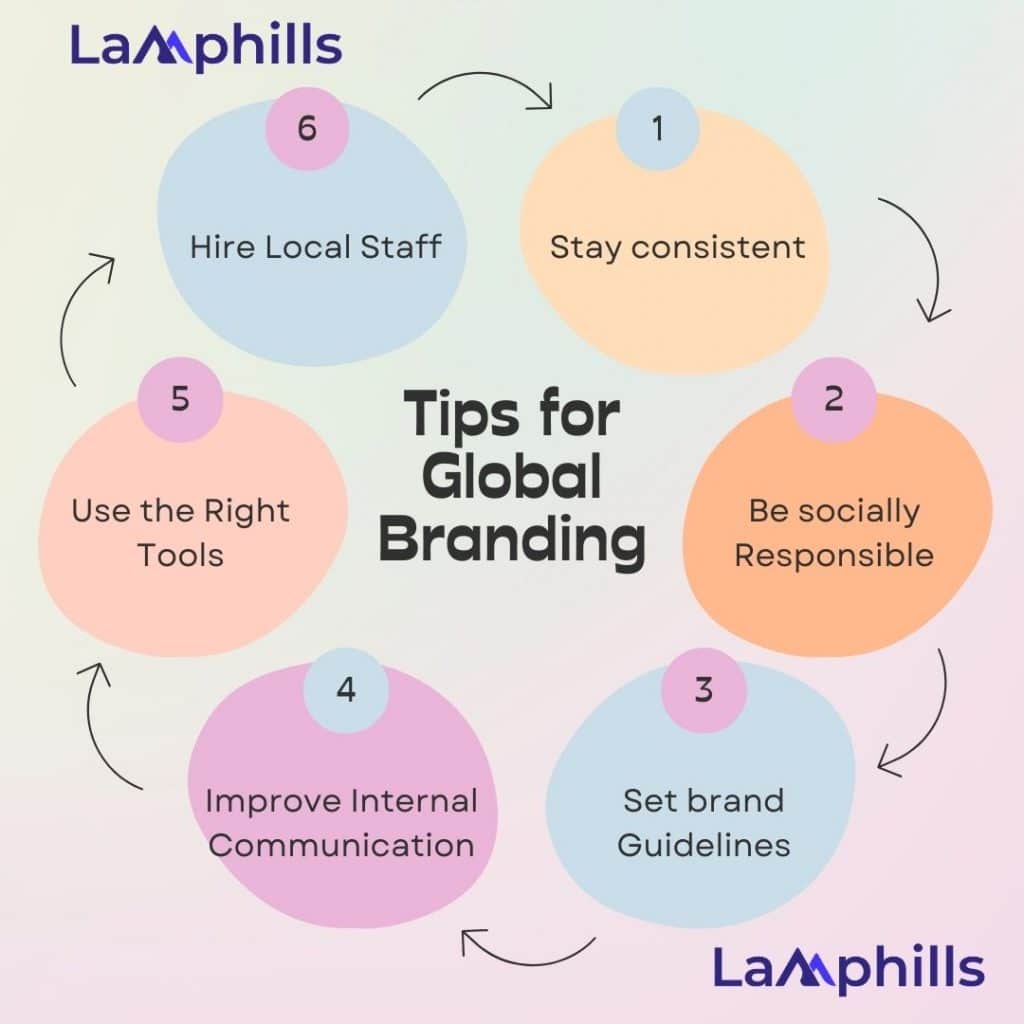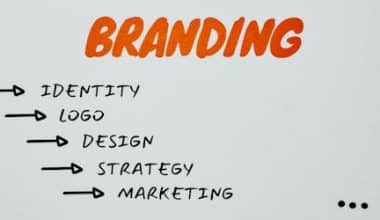Have you ever noticed how certain brands seem to be everywhere, no matter where you go in the world? Whether it’s a logo on a billboard or a product in your hand, some brands have a global presence that’s hard to miss. I remember traveling abroad for the first time and being amazed to see the same familiar brands I used back home. It made me wonder what makes these brands so recognizable across continents.
There’s something about global brands that goes beyond just a product. It’s a feeling of familiarity and trust. But what sets these most recognized global brands apart from others? Is it their marketing, consistency, or something more profound in how they connect with people worldwide?
Let’s explore the world of global brands and what makes them stand out on the international stage.
Key Points
- Global brands maintain a uniform look, feel, and message across all markets, which fosters familiarity and trust and makes their logos and products easily identifiable worldwide.
- While maintaining their core identity, successful global brands adjust their marketing strategies or products to fit local tastes, showing respect for cultural differences.
- A PR-first mindset, backed by credible sources, reviews, and media coverage, helps global brands build trust with consumers and enhance their global reputation.
- Modern consumers, particularly millennials and Gen Z, are drawn to socially responsible brands that give back to communities, making ethical practices crucial for global success.
- Iconic companies like Apple, Google, Amazon, and Coca-Cola stand out due to their worldwide presence, innovative products, and strong brand recognition across multiple regions.
Global Brands
Global brands are companies or products widely recognized and available across multiple countries worldwide. These brands have a consistent identity, reputation, and image across different regions, allowing them to connect with customers globally.
A few characteristics of global brands include:
- Worldwide presence: They operate in many countries and have a large, international customer base.
- Consistency: Global brands maintain a uniform look, feel, and message across all markets to create a familiar experience for consumers.
- Strong recognition: Their logos, names, and products are easily identifiable by people worldwide.
- Cultural adaptability: While global brands keep their core identity intact, they may adjust their products or marketing strategies to suit local tastes and preferences.
Companies like Apple, Coca-Cola, and McDonald’s are global brands that are known and available in many countries.
How To Make Your Brand Stand Out Globally
Making your brand recognizable worldwide can be tricky, but it’s doable. Here are six tips to help your brand succeed no matter where you are:
#1. Adopt a PR-first mindset
Instead of saying, “We’re the best,” back it up with proof from trusted sources. Focus on getting reviews, media coverage, and awards to build credibility. When others vouch for you, it strengthens trust with global consumers.
#2. Create a modern, professional website
Make sure your site is fast, easy to use, and up-to-date. Use SEO to help people find you and add videos and images to make it more engaging. A professional site can build trust and pull people in.
#3. Highlight your team
Show off the people behind your brand. Let people know who your founders are, what they believe in, and their story. Customers who connect with the people behind the brand are more likely to trust your products.
#4. Give back
More and more people, especially millennials and Gen Z, prefer brands that are socially responsible. Highlight any charitable work or ethical practices your brand follows. People will choose a brand that’s doing good over one that’s not.
#5. Respect other cultures
When expanding globally, be sensitive to cultural differences. What’s funny in one country might be offensive in another. Always be professional, and make sure your content fits the culture you’re targeting.
#6. Stay on top of global news
Keep up with global events and see if there’s a way to tie your brand to what’s happening. For example, if you sell health products, connect your content to health-related news stories. This can quickly create buzz for your brand.
Tips for Global Branding
Here are some essential tips to help boost your global branding:

#1. Stay consistent
Don’t change your brand’s core values just to fit a local market. While making small tweaks to match local cultures is okay, your overall message should have the same emotional appeal and value everywhere.
#2. Be socially Responsible
To build a good reputation globally, align your brand with ethical choices. This means treating employees well, being environmentally conscious, and giving back to communities in need.
#3. Set brand Guidelines
Create guidelines that outline your brand’s identity. Include your visual style, tone, and vision to ensure everyone understands what your brand stands for.
#4. Improve Internal Communication
Ensure your team shares the same messages, goals, and expectations in all locations to keep things consistent.
#5. Hire Local Staff
Hiring people from the local market helps you understand their culture and business style. Working with local consultants can give you valuable insights into how things work in different regions.
#6. Use the Right Tools
Keep your marketing efforts smooth by using online tools and software. Since you’re working across different time zones, platforms that schedule campaigns and social media posts automatically can be really helpful.
Most Recognized Global Brands
Some of the most recognized global brands stand out due to their widespread presence, strong marketing, and iconic products or services. Here are a few of them:
#1. Apple

As the largest company globally, Apple’s brand is easily one of the most recognizable. From iPhones and iPads to Apple Watches and iPods, people all over the world use Apple products. This widespread usage explains the brand’s popularity.
There are many stories about the Apple logo’s origin. Some say it’s connected to the biblical story of Eve and the apple from the Tree of Knowledge, while others suggest the bite in the apple represents a “byte” of data – a clever play on words by the brand.
Apple’s iconic look owes much to its founder, Steve Jobs. The original rainbow-colored bitten apple logo transitioned to the current sleek monochrome version in 1998, reinforcing Apple’s minimalist reputation.
#2. Google

If you’ve ever used the Google search engine, its colorful logo is likely etched in your memory. The logo, with its blue, red, yellow, and green letters, has undergone a few changes, the most recent one in 2015. The tilted ‘e’ at the end? That’s Google’s way of saying they’re not afraid to be different.
Google also spices things up with their fun “Google Doodles” for special events, like New Year’s or Marie Curie’s birthday. Even though Google is now under the Alphabet Inc. umbrella, we still call it Google, and “Googling” has become a word on its own.
#3. Amazon

Amazon’s brand screams convenience. Amazon has established itself as the go-to online store from books to gym gear. Its logo, with the arrow connecting the letters ‘a’ to ‘z,’ is a fun way of showing it sells just about everything.
Amazon Prime’s fast and reliable delivery service has earned the trust of millions of customers. However, with Jeff Bezos, Amazon’s famous founder, there are both good (brand fame) and bad (controversies like low employee wages).
#4. Microsoft

Microsoft might be the last in this tech lineup, but it’s still one of the top brands worldwide. Much of its recognition comes from its famous founder, Bill Gates, known not just for his wealth but for his charity work too.
Though Microsoft has popular products like Office and Windows, the brand’s identity as a tech giant goes back to its role in the microcomputer revolution, co-founded by Gates and Paul Allen in 1975. The logo, unchanged since 2012, features four colored squares, symbolizing the company’s strong presence.
#5. Coca-Cola

Coca-Cola is the only non-tech brand on this list with a logo that hasn’t changed much since the 1950s. Along with the core Coca-Cola product, the brand has expanded to include variations like low-sugar and flavored drinks.
Coca-Cola’s brand goes beyond the drink itself. Thanks in part to its massive advertising budget, it’s a symbol of capitalism and American culture. The brand focuses on creating a lifestyle and culture around the beverage.
#6. Samsung

Samsung didn’t always have the recognition it enjoys today. Back in the day, it was considered a maker of cheap electronics, especially when compared to established brands like Sony.
Over the years, Samsung’s innovation in cutting-edge technology has transformed its image. Today, it’s one of the world’s most recognizable brands, with designs that reflect its growing reputation.
#7. Toyota

Toyota’s brand strength lies in its size as the world’s largest car manufacturer. Originally named Toyoda after the founder’s family, the company changed to Toyota because it sounded crisper.
The logo, which features overlapping ovals, represents the letter ‘T’ for Toyota, which is embraced by the world. This symbolism is especially meaningful in Japan, where the brand’s roots run deep.
#8. Mercedes-Benz

Mercedes-Benz is Europe’s representative on this list and is the most valuable luxury car brand globally. Its three-pointed star logo, created in 1925, has become synonymous with luxury and sophistication.
Mercedes-Benz frequently ranks among the top recognizable and valuable brands, ahead of other luxury car makers like Rolls Royce and even newer players like Tesla.
#9. McDonald’s

McDonald’s iconic golden arches have remained virtually unchanged since they were first introduced in 1968. With around 3.5 million customers daily in the UK alone, the brand’s recognition is unmatched.
The founders of McDonald’s, Richard and Maurice McDonald, pioneered the fast-food method we know today. Ray Kroc, who expanded the brand globally, transformed the fast-food industry by making McDonald’s a family-friendly establishment rather than just a roadside diner.
#10. Disney

Disney’s brand recognition comes from its beloved movies and theme parks. Characters like Mickey Mouse and classics like Cinderella have captured audiences for nearly a century. The company’s success comes from acquiring popular brands like Marvel and Pixar.
With theme parks across the globe and a dominant role in the entertainment industry, Disney’s brand is recognized worldwide and only continues to grow.
Is McDonalds a Global Brand?
McDonald’s is a top global food service company, operating about 34,000 restaurants in 118 countries and regions and serving over 69 million people daily worldwide.
A comprehensive checklist is essential for maintaining consistency and coherence across all markets. Use this Global Brand Identity Checklist to ensure your brand’s identity is solid, recognizable, and adaptable wherever you operate.
Is KFC a Global Brand?
KFC, based in Louisville, Kentucky, is a global brand and the second-largest restaurant chain by sales, following McDonald’s. As of April 2024, it operates more than 30,000 locations in 150 countries.
Is Nandos a Global Brand?
Nando’s began as a small restaurant in South Africa. After a few years, a prominent British company took over. Since then, it has grown into a big, international restaurant chain with locations in many different countries worldwide.
Related Post
Top CSR Brands: 11+ Inspiring Examples of Corporate Social Responsibility
Global Branding Strategies: Key Principles for International Success
What Are Transparent Brands? Why They Matter and What We Can Learn From Them





